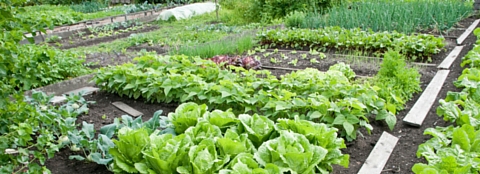July Northern Garden Checklist

Watering:
- Temperatures are rising so monitor your plantings for moisture stress. New plantings and moisture lovers are your highest priority. Always water thoroughly to encourage deep more drought tolerant roots.
- Reduce your workload and conserve water by using soaker hoses or a drip irrigation system. You’ll use less water and reduce the risk of disease by applying the water directly to the soil instead of wetting the foliage
Flower Care:
- Give annual flowers a mid season boost with Milorganite®. The low nitrogen slow release fertilizer won’t interfere with flowering and fruiting and won’t damage the plants during hot dry weather.
- Continue to deadhead flowers for continual on-going bloom and beauty. Pinch back leggy annuals to encourage branching and more flowers. Stagger deadheading, pinching and pruning within each flowerbed to keep you in flowers all season long.
- Don’t be alarmed if alyssum, French marigolds, lobelia and other heat sensitive annuals stop blooming during extremely hot weather. Water as needed and wait for cooler weather and blossoms to return.
- Make note of hot spots in the garden. Next year use heat and drought tolerant plants such as zinnia, moss rose, gazania, cosmos, sunflower and cleome in those areas of your garden.
Vegetable Garden Planting and Harvest:
- Give vegetables a mid season boost with Milorganite. The low nitrogen slow release fertilizer won’t interfere with flowering and fruiting and won’t damage the plants during hot dry weather.
- Keep planting as long as you have space, time and plants. Give July transplants extra attention during hot dry spells. Mulch new plantings to conserve moisture and keep soil temperatures cool.
- Keep planting seeds and transplants of short-season vegetable crops that can be harvested before the first killing frost. Check the back of the seed packet for days from planting to harvest.
- Don’t be discouraged if your first few tomatoes are black on the bottom. Blossom end rot on tomatoes is caused by fluctuations in soil moisture that leads to calcium deficiencies. Avoid root damage, mulch the soil and water thoroughly as needed. Cut out the black portion and enjoy the rest of the fruit.
- Prune summer-bearing and everbearing raspberry plants after harvest. Prune all the older canes that bore fruit this summer back to ground level.
Tree and Shrub Care:
- Lightly prune wayward branches on arborvitae, yews and junipers once the new growth has expanded. Clip stems back to a healthy bud or side shoot to contain growth.
- Replenish mulch around established plantings of trees and shrubs if needed. Maintain a 3 inch layer of wood mulch around these plants to conserve moisture, suppress weeds and improve the soil as they decompose. Do not bury the crowns or place mulch against tree bark. This leads to rot and disease.
Pest and Disease Control:
- Check older crabapple varieties for apple scab that causes leaf spotting and defoliation. Rake and destroy leaves as they fall to reduce the source of disease next season. Consider replacing disease-susceptible crabapples with newer scab-resistant cultivars.
- Monitor lilacs and other susceptible shrubs for powdery mildew. Look for a white powdery substance on the leaves. Infected plants will survive, but their appearance declines as the season progresses. Reduce problems by increasing the light and air circulation with proper pruning. Select mildew resistant cultivars for future plantings.
- Aster yellows can cause green petals, distorted leaves and misshapen flowers on many plants. Remove infected plants as soon as you find them to reduce the risk to nearby healthy plants. Control aphids and leafhoppers feeding on the plants to prevent the spread of this disease.
- Continue to monitor for pests like Japanese beetles, aphids and mites. Hand pick small populations and look for other eco-friendly methods and products to manage damaging populations.

